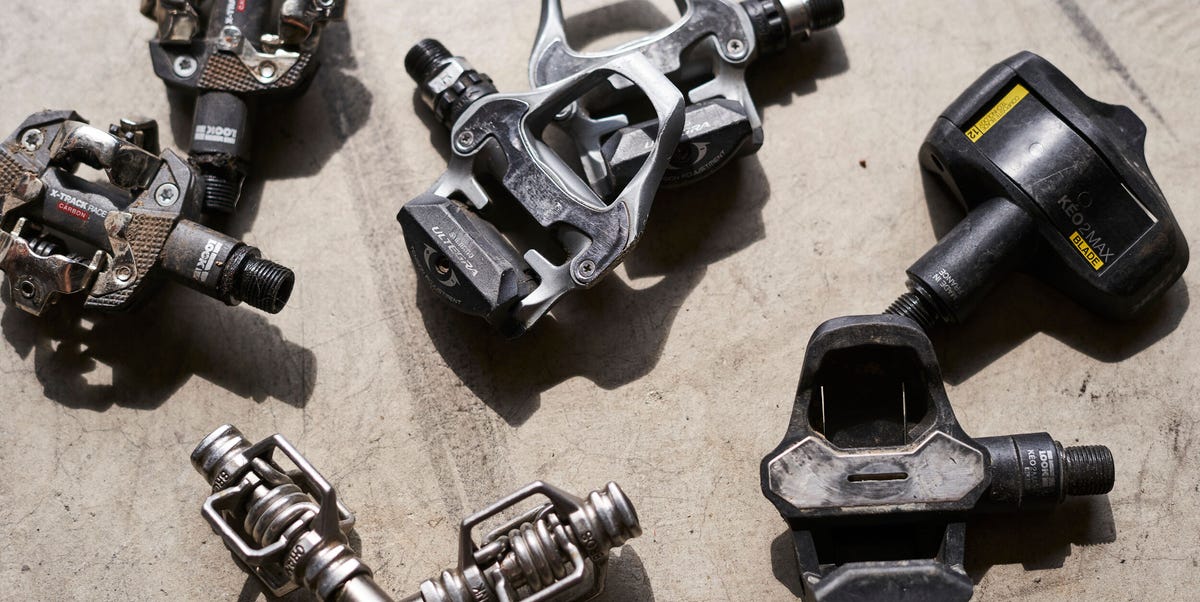Understanding Clipless Pedals
For many beginner road, gravel, and mountain bike riders, using clipless pedals is a significant milestone. These pedals, often referred to as clip-in, click-in, or SPDs by cyclists, offer a more secure connection between the rider’s feet and the bike. They enhance efficiency by improving power transfer and allowing riders to pull up with each pedal stroke, in addition to pushing down as on traditional flat pedals.
However, selecting the right clipless pedals and shoes can be overwhelming for new riders. There are numerous options available from manufacturers, making it challenging to find the perfect fit. This guide aims to simplify the process, helping you choose the right components and confidently take to the road or trail.
The Origin of the Term “Clipless”
One common question about clipless pedals is why they are called “clipless” if you clip into them. The term might seem confusing at first, but it has a historical explanation. Before clipless pedals became popular, cyclists used toe clips and straps to secure their feet to the pedals. These systems involved metal or plastic cages (clips) that held the shoe in place, along with leather or nylon straps to prevent slipping.
In the mid-1980s, a new type of pedal emerged featuring a mechanical attachment system paired with a special plastic cleat on cycling shoes. These pedals functioned similarly to ski boots and bindings, securely attaching the rider’s shoes to the pedals. They allowed for quick release in case of a crash, making them much easier and safer than toe clips and straps. Since these pedals did not use the old-style clips, they were named “clipless.”
Another common question is why many new bikes are sold without pedals. The reason is that many riders prefer to install their own preferred brand of clipless pedals. It is more cost-effective for bike brands to omit pedals rather than include ones that many buyers won’t want.
Choosing the Right Pedals
Before purchasing clipless pedals, consider your riding needs. While some pedals are labeled as “road” models, they may not be suitable for all types of riding. Similarly, gravel riders often use mountain bike pedals. Remember, your comfort and preferences should guide your choice. If you prefer flat pedals, there is no need to switch.
There are two main types of clipless pedals: single-sided and dual-sided. Single-sided pedals have a mechanical binding on one side, while the other side is smooth. They are typically marketed for road cycling but may be harder to engage for frequent unclipping. Dual-sided pedals, also known as SPDs, offer two sides for clipping in, making them easier to use and more walkable. They are ideal for mountain biking, gravel riding, and commuting.
Some brands offer hybrid pedals that combine flat and clipless features, allowing for versatility. These are great for commuting or casual rides where you might wear sneakers.
Selecting the Right Shoes
Most clipless shoes are designed for either 2-bolt or 3-bolt cleats. Ensure your chosen shoes are compatible with your pedals. Road shoes usually use 3-bolt cleats, while mountain, gravel, and commuter shoes often use 2-bolt cleats. Some indoor cycling shoes have both cleat patterns, and adapters are available for 2-bolt cleats on 3-bolt shoes. However, it is best to choose shoes specific to your pedal type.
Buying Process and Closure Systems
Clipless-compatible shoes range in price from under $30 to over $700. Consider comfort, fit, and walkability when choosing. Try shoes on in a local bike shop to ensure a good fit. Closure systems include laces, Velcro, and dials. Each has its advantages, so choose based on your needs and preferences.
Installation and Practice
Follow manufacturer guidelines when installing cleats and adjusting tension. Start with float cleats and practice riding on easy terrain before heading to busy roads or technical trails. Practicing indoors on a trainer can help build confidence. Once comfortable, gradually increase difficulty.
Maintenance Tips
Regularly check your pedals and cleats for wear and damage. Clean and lubricate them to extend their lifespan. Replace worn cleats promptly to avoid safety issues. Always use reputable retailers for replacements to ensure quality and compatibility.
By understanding the different types of clipless pedals and shoes, and following proper installation and maintenance practices, you can enjoy a more efficient and secure riding experience. Whether you’re a beginner or an experienced cyclist, clipless pedals can enhance your performance and comfort on the bike.







